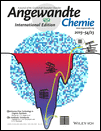Tuning the Metal–Support Interaction by Structural Recognition of Cobalt-Based Catalyst Precursors†
The authors thank V. Lecoq and F. Diehl (IFP Energies nouvelles), and E. Marceau (UPMC—Paris) for fruitful discussions. Part of this work was supported by the French National Research Agency within the framework of the ANR-14-CE08-0019 SLIMCAT project.
Graphical Abstract
The interaction of cobalt-based catalyst precursors with γ-alumina and amorphous silica–alumina surfaces was investigated by means of DFT calculations. A structural recognition between the surface and the precursor could be evidenced. A model for the growth of the experimentally observed β-Co(OH)2 on the surface could be proposed from those calculations.
Abstract
Controlling the nature and size of cobalt(II) polynuclear precursors on γ-alumina and silica-alumina supports represents a challenge for the synthesis of optimal cobalt-based heterogeneous catalysts. By density functional theory (DFT) calculations, we show how after drying the interaction of cobalt(II) precursor on γ-alumina is driven by a structural recognition phenomenon, leading to the formation of an epitaxial Co(OH)2 precipitate involving a Co–Al hydrotalcite-like interface. On a silica-alumina surface, this phenomenon is prevented due to the passivation effect of silica domains. This finding opens new routes to tune the metal–support interaction at the synthesis step of heterogeneous catalysts.





